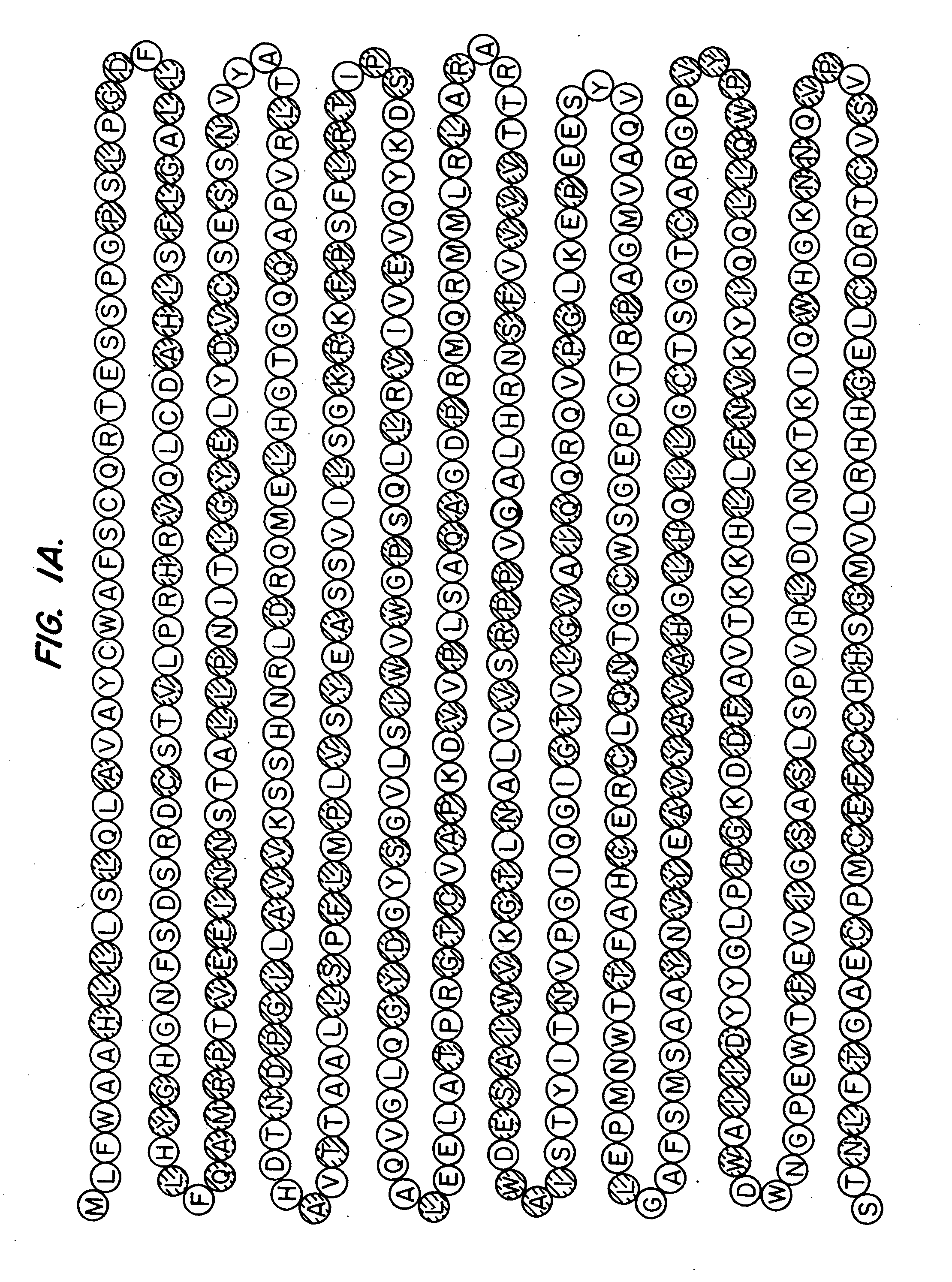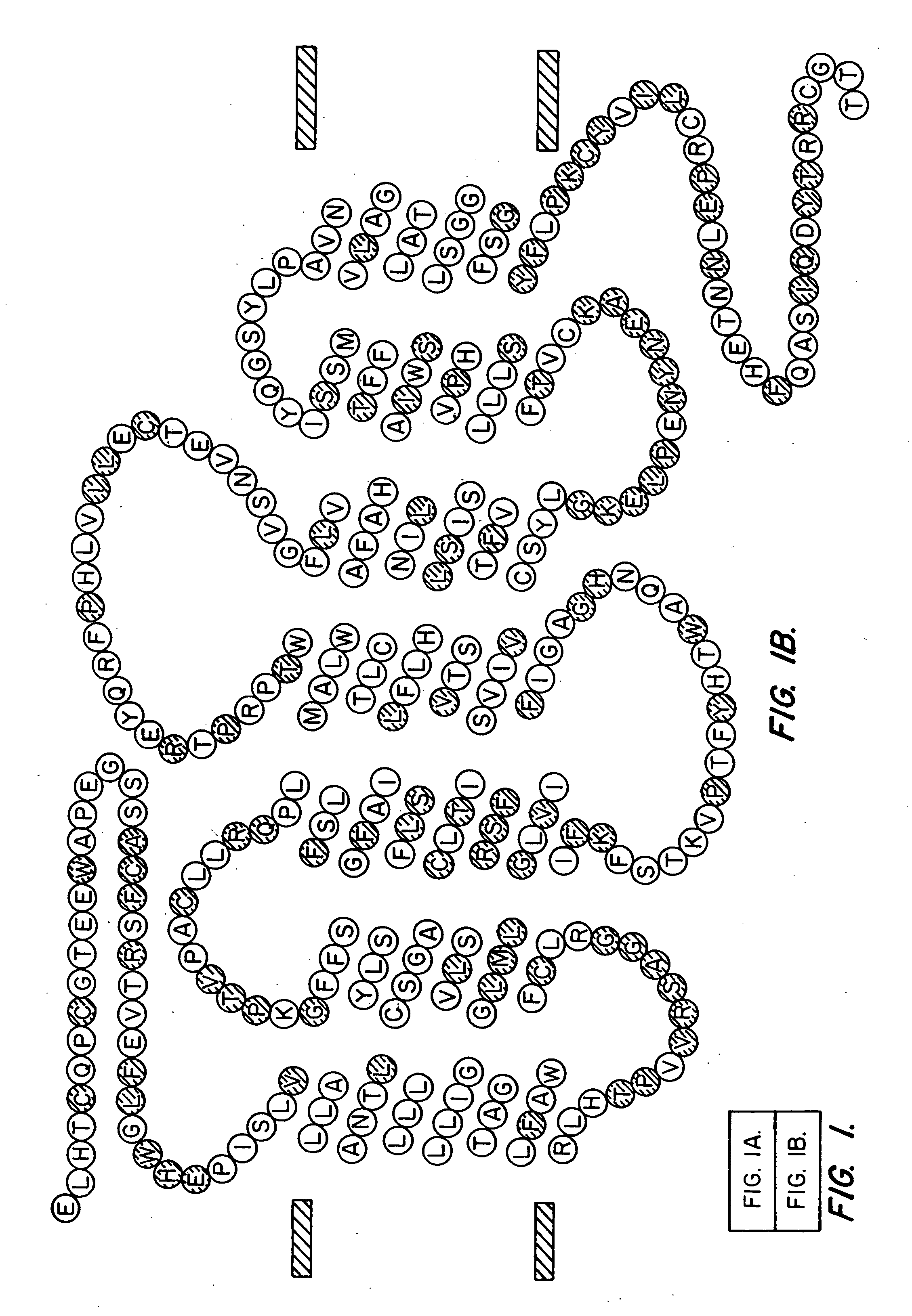Nucleic acids encoding a G-protein coupled receptor involved in sensory transduction
a gprotein coupled receptor and nucleic acid technology, applied in the field of isolated nucleic acids and amino acid sequences of sensory cell specific gprotein coupled receptors, can solve the problem that little is known about the specific membrane receptors involved in taste transduction
- Summary
- Abstract
- Description
- Claims
- Application Information
AI Technical Summary
Benefits of technology
Problems solved by technology
Method used
Image
Examples
examples
[0240] The following examples are provided by way of illustration only and not by way of limitation. Those of skill in the art will readily recognize a variety of noncritical parameters that could be changed or modified to yield essentially similar results.
example i
Cloning and Expression of GPCR-B3
[0241] Since taste transduction occurs in taste receptor cells found in taste buds of the tongue and palate epithelium, a full-length cDNA library was generated from rat taste papillae. This library was made by oligo-dT priming of poly-A+ RNA isolated from several hundreds rat circumvallate papillae using a directional 1ZAP vector (Stratagene Inc; Hoon & Ryba, J. Dent. Res. 76:831-838 (1997)) following standard molecular biology procedures (see, e.g., Ausubel et al., Current Protocols in Molecular Biology (1995). A collection of single-cell and single taste-bud cDNA libraries was also generated from individually isolated taste receptor cells and taste buds from rat and mouse circumvallate, foliate and fungiform papillae according to the method of Dulac & Axel, Cell 83:195-206 (1995). Taste buds and single taste receptor cells were isolated by enzymatic digestion and micro-dissection of lingual epithelium from adult rats and mice. To maximize lysis e...
example ii
Western Blot and In Situ Analysis
[0247] To demonstrate specific expression of GPCR-B3 protein in taste cells, antibodies were generated against short peptides and GPCR-B3 fusion proteins. The peptides consisted of 18 amino acid residues from the N- or C-terminal end of the GPCR-B3 predicted protein (see, e.g., SEQ ID NO:1 and 2). The fusion proteins consisted of GST-fusion polypeptides encompassing the entire N-terminal domain or the last 3 predicted transmembrane segments plus the C-term region. Fusions were generated using standard molecular techniques (Harlow & Lane, Antibodies (1988)). Peptides were fused to carrier proteins, immunized into rabbits, and the serum affinity purified and assayed as described by Cassill et al., Proc. Nat'l Acad. Sci. USA 88:11067-11070 (1991)).
[0248] Antibodies were tested for specificity by western-blot analysis of protein homogenates from circumvallate or fungiform papillae. The blots also contained liver and brain protein extracts as negative c...
PUM
| Property | Measurement | Unit |
|---|---|---|
| Fraction | aaaaa | aaaaa |
| Fraction | aaaaa | aaaaa |
| Atomic weight | aaaaa | aaaaa |
Abstract
Description
Claims
Application Information
 Login to View More
Login to View More - R&D
- Intellectual Property
- Life Sciences
- Materials
- Tech Scout
- Unparalleled Data Quality
- Higher Quality Content
- 60% Fewer Hallucinations
Browse by: Latest US Patents, China's latest patents, Technical Efficacy Thesaurus, Application Domain, Technology Topic, Popular Technical Reports.
© 2025 PatSnap. All rights reserved.Legal|Privacy policy|Modern Slavery Act Transparency Statement|Sitemap|About US| Contact US: help@patsnap.com



